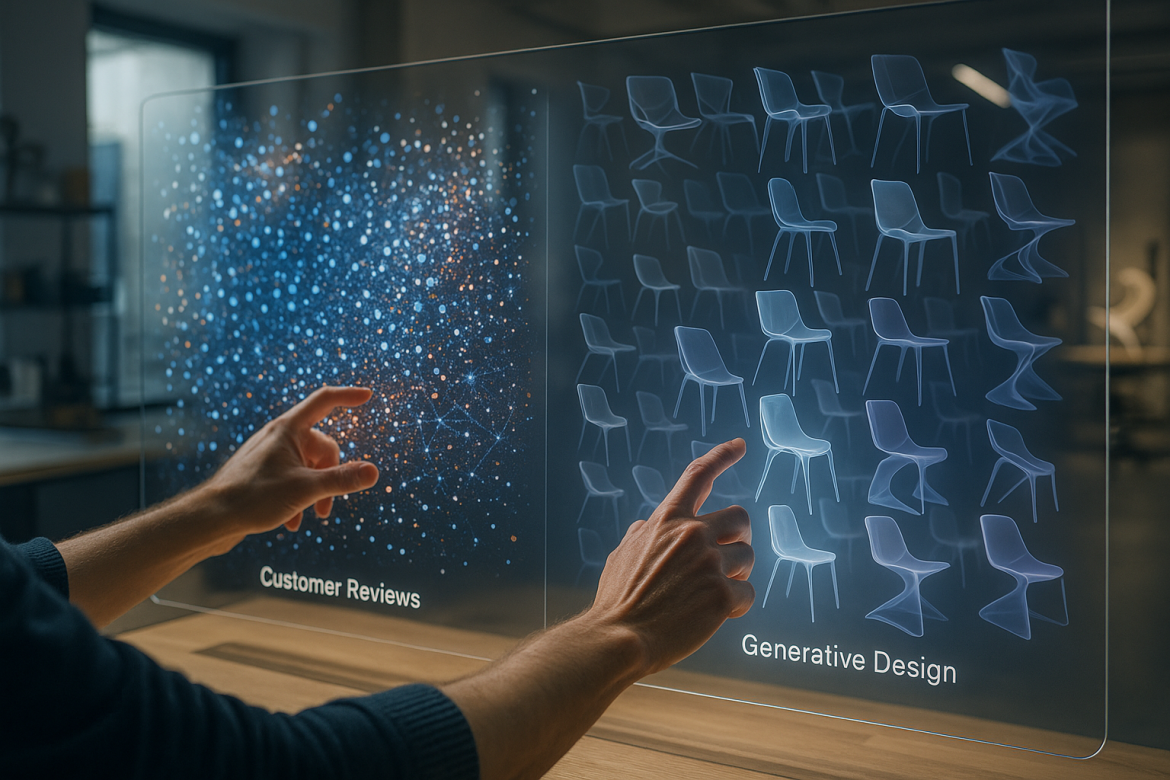Why Brainstorming is Over
Remember the classic scene: a team gathered in a room, a whiteboard covered in colorful post-it notes, lukewarm coffee, and the suffocating pressure to “be creative.” For decades, brainstorming was the sacred ritual of innovation. In August 2025, however, this ritual is becoming obsolete—not because human creativity has lost its value, but because the very nature of idea generation has been transformed.
The title of this article is deliberately provocative. Brainstorming isn’t “over” in the sense that human collaboration has disappeared. What is over is the reliance on unstructured, intuition-based brainstorming sessions, limited by the biases and knowledge of the few people in the room.
Artificial intelligence has introduced a new methodology: data-driven innovation, a process where human intuition is not replaced, but rather amplified by AI’s ability to analyze, generate, and test ideas at a scale and speed previously unimaginable. Innovative companies, from startups in Sumaré to tech giants, are using AI to build better products, faster, and with a much deeper connection to real market needs.
Let’s explore three fundamental areas where this revolution is happening.
1. Market Analysis 2.0: AI as the Voice of a Thousand Customers
The biggest risk in creating a new product is building something nobody wants. Traditionally, companies tried to mitigate this risk with market research, focus groups, and interviews—methods that are expensive, slow, and represent a tiny sample of the audience.
The New Approach: High-performing product teams today use AI tools to analyze in a few hours what an army of analysts would take months to process. These tools can:
- Analyze thousands of reviews: AI can “read” and understand thousands of customer reviews of your products and your competitors’ on sites like Amazon, the App Store, and forums like Reddit.
- Identify hidden pain points: Using Natural Language Processing (NLP), AI performs sentiment analysis and identifies recurring patterns and keywords. It groups complaints like “difficult to assemble,” “battery doesn’t last,” or “it would be great if it had a feature for…” into clear, actionable themes.
The result is a data-driven opportunity map. Instead of asking, “What do we think customers want?”, the question becomes, “What does the data tell us customers are already asking for?”. Innovation ceases to be a shot in the dark and becomes a direct response to a validated market need.
2. Generative Design: AI as an Engineering Partner
Once an opportunity is identified, the challenge shifts to product design. The traditional approach involves a team of designers and engineers creating a few prototypes based on their limited experience and creativity.
The New Approach: Generative design flips this process. Engineers define the parameters and constraints for the AI:
- Objective: Minimize weight, maximize strength, and reduce production cost.
- Constraints: Must be made of this material, fit into this space, support this load.
The AI then autonomously explores thousands—sometimes millions—of design permutations, generating solutions a human would never have conceived. It presents optimized options that meet all requirements, often with organic shapes and highly efficient structures. The designer’s role evolves from a manual drafter to a strategic curator, using their expertise to select and refine the best machine-generated solutions.
3. Visual Prototyping in Minutes, Not Weeks
A great idea needs to be visualized to be validated, whether for an internal presentation or initial customer testing. Historically, creating a polished mockup or a photorealistic rendering was a time-consuming process.
The New Approach: AI image generation tools like Midjourney or Adobe Firefly have become ultra-fast prototyping tools. A product manager or designer can now translate an idea into stunning images in minutes.
- The process: A simple text prompt like, “A robotic vacuum cleaner, sleek and minimalist design in matte black with copper accents, inspired by sports cars, product photography in a clean, modern living room setting” can generate dozens of visual concepts.
- The Impact: This radical speed allows teams to test and iterate on a product’s aesthetics before a single line of code is written or a single physical mold is created. Ideas can be validated or discarded in a single day, enormously accelerating the innovation cycle.
Tools for the New Era of Innovation
To implement this modern approach, product teams are turning to a new generation of tools:
- Product and feedback management: Tools like Productboard use AI to help centralize and analyze customer feedback, turning raw data into clear insights for your roadmap.
- Design and Prototyping: The Adobe Creative Suite, with its integrated Firefly AI engine, is drastically accelerating the design workflow, from ideation to final production.
- Recommended Reading: To delve deeper into the modern innovation mindset, books like “Inspired: How to Create Tech Products Customers Love” by Marty Cagan remain essential reading.
Conclusion: The New Brainstorming is a Conversation
Brainstorming hasn’t died; it has evolved. The ideation session of 2025 is no longer a group of people staring at a whiteboard, but a dynamic conversation between the team’s creative intuition and the analytical and generative power of artificial intelligence.
The innovator’s role is changing. There is less focus on having the “genius idea” out of thin air and more focus on mastering the art of asking the right questions to the AI, defining the most important problems, and skillfully selecting the best solutions from a universe of possibilities. This shift is not a threat but the greatest leverage in the history of product creation, available to companies of any size, from Sumaré to Silicon Valley.
